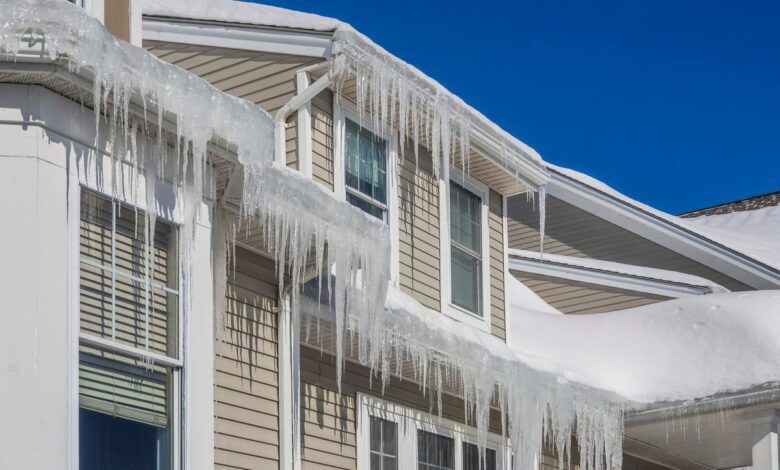10 Steps To Keep Your House Safe And Warm For Winter

It’s time to make sure that your house is ready for cold weather. These steps, most of which you can take yourself, will help lower your utility bills and protect your investment. As the winds howl, the snow flies and the temperatures fall, they will also aid in peace of mind and physical comfort.
Tune Up Your Heating System
The time to learn that your furnace needs repair is not during the first cold snap. Plan ahead and schedule an annual wellness visit for your heating system. It will cost about $80 to $100, and includes inspecting your furnace or heat pump to be sure the system is clean and in good repair, and that it can achieve its manufacturer-rated efficiency. The inspection also measures carbon-monoxide leakage.
If you need guidance, use the website of the Air Conditioning Contractors of America, a non-profit industry resource, to find a heating and air-conditioning contractor that belongs to and employs technicians certified by the North American Technician Excellence (NATE) program.
Reverse Your Ceiling Fans
If your ceiling fan has a reverse switch, use it to run the fan’s blades in a clockwise direction after you turn on your heat. Energy Star says the fan will produce an updraft and push down into the room heated air from the ceiling (remember, hot air rises.)
This is especially helpful in rooms with high ceilings — and it might even allow you to turn down your thermostat by a degree or two for greater energy savings.
Prevent Ice Dams
Ice dams are the bane of the cold-weather roof, and if you have had them, you know it. If your home had lots of icicles last winter, pay attention. Icicles are, basically, ice dams in the making.
Ica dams can cause meltwater to back up and flow into your house, so take steps to prevent potential damage this year.
A home-energy auditor or weatherization contractor can identify and fix air leaks and inadequate insulation in your home’s attic that can lead to ice dams.
Inspect the Roof
Scan it closely with binoculars and look for damaged, loose or missing shingles that may leak during winter’s storms or from melting snow.
Check and repair breaks in the flashing seals around vent stacks and chimneys.
If your roof is flat and surfaced with asphalt and pebbles, as many are in the Southwest, rake or blow off fall leaves and pine needles, which hold moisture. Don’t sweep aside the pebbles; that will expose the asphalt to damaging sunlight.
Caulk Around Windows and Doors
Experts say that if the gaps between siding and window or door frames are bigger than the width of a nickel, you need to reapply exterior caulk. Check the joints in window and door frames, too. Silicone caulk is best for exterior use because it won’t shrink and it’s impervious to the elements.
Check window-glazing putty, which seals glass into the window frame. Add weatherstripping as needed around doors, making sure you cannot see any daylight from inside your home.
Clean the Gutters
If your gutters are full of leaves and other detrius, water can back up against the house and damage roofing, siding and wood trim. It can also cause leaks and ice dams.
While cleaning gutters, look for missing or damaged gutters and fascia boards and repair them.
Divert Water
Any home-repair expert will tell you that the secret to home maintenance is moisture management: keep water outside and away from the roof and the foundation. Add extensions to downspouts so that water runs at least three to four feet away from the foundation.
Turn Off Exterior Faucets
Undrained water in pipes can freeze, which will cause pipes to burst as the ice expands. Start by disconnecting all garden hoses and draining the water that remains in faucets.
If you don’t have frost-proof faucets, as homes more than ten to 15 years old typically do not, turn off the shut-off valve inside your home.
Test Your Sump Pump
Slowly pour several gallons of water into the sump pit to see whether the pump turns on. You should do this every few months, but especially after a long dry season or before a rainy one.
For more complete instructions for testing and maintenance, check your owner’s manual. Most sump pumps last about ten years, according to Chubb Personal Insurance.
Call a Chimney Sweep
Before you burn the Yule log, make sure your fireplace, or any heating appliance burning gas, oil, wood or coal, as well as the chimney and vents are clean and in good repair. That will prevent chimney fires and prevent carbon monoxide from creeping into your home.
Search for a sweep certified by the Chimney Safety Institute of America. You can expect to pay $50 to $90 for an inspection to see if you need a cleaning, and $100 to $300 for the cleaning.
Get Best News and Web Services here







